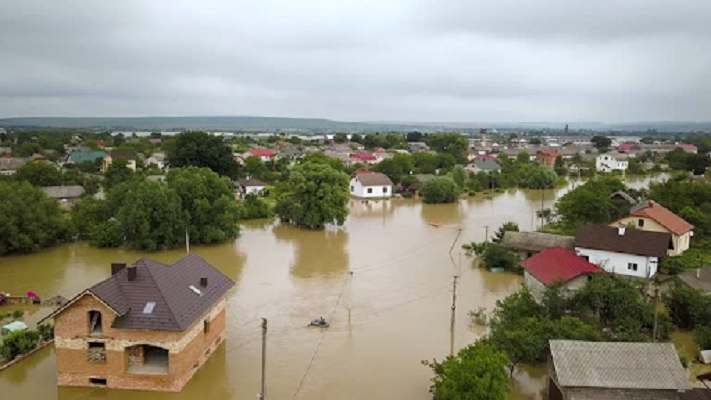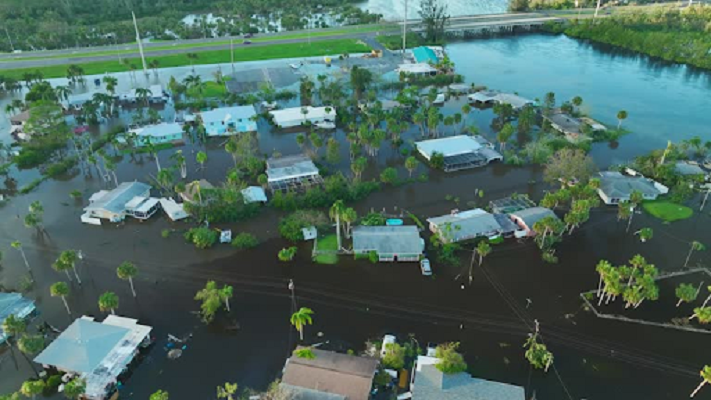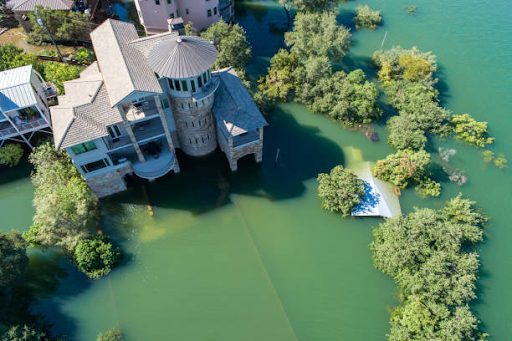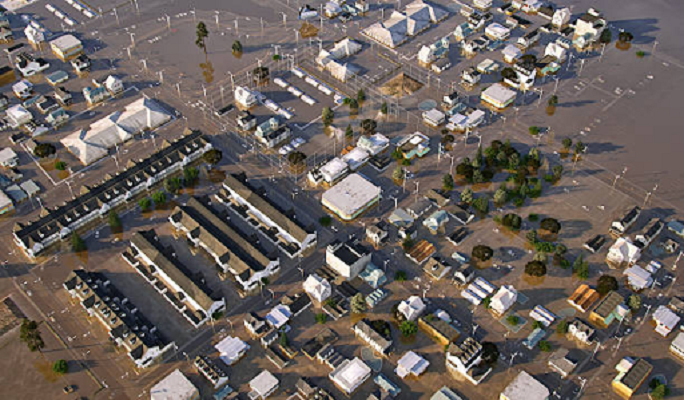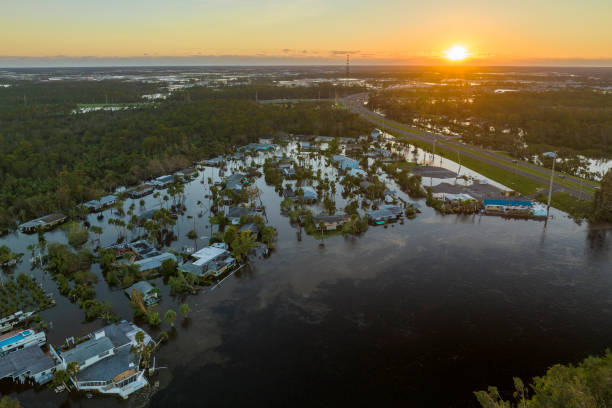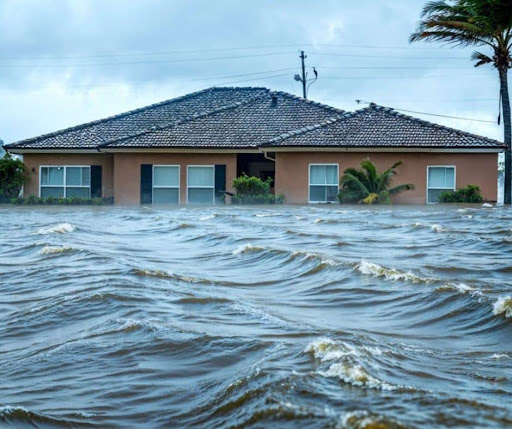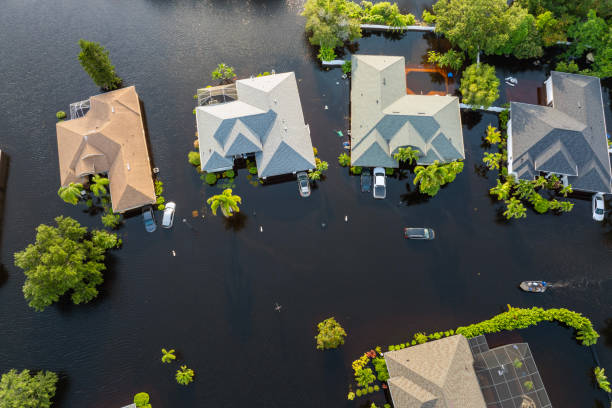If homeowners in Florida know anything, it is that the weather has no rules. One week may be warm and sunny, and the next week may rain torrents, hurricanes, or storm surges that flood entire subdivisions with water. Homeowners insurance will protect against most hazards but seldom protects against floods. That is where Florida flood insurance coverage enters, guaranteeing peace of mind when Mother Nature unleashes her curveballs.
Flood insurance is not a separate policy; it’s a smart investment, right now, at least, when volatile weather is the standard. Let’s explore why getting insurance on your home through flood insurance is not an option, it’s a necessity.
The Rising Threat of Flooding in Florida
Florida’s Geography and Weather Challenges
Florida’s geography also exposes it specifically to flooding. The state has low grounds, long coastlines, and tropical climate conditions, so a little is all it takes for the storm surges or hurricanes to cause widespread water damage. Even inland communities experience danger from overtopping rivers and storm runoff.
Rising Sea Levels and Climate Shifts
Experts caution that the rising seas will heighten flooding in years to come. This means areas that previously flooded every decade should now be flooding every few years. For Florida homeowners, this new reality means it is not only convenient but necessary for them to have Florida flood insurance coverage.
Why Homeowners Insurance Isn’t Enough?
The majority of individuals assume their home insurance will pay out if the house is damaged by flood. Unfortunately, it doesn’t. Homeowners will pay out for water damage from a burst pipe, but not from external flooding caused by storms, rain, or rising tides.
Without flood insurance, you’re left to shoulder repair costs that can easily run into tens of thousands of dollars, or more. Considering that just one inch of floodwater can cause significant structural and electrical damage, skipping flood coverage is a financial gamble.
The Benefits of Flood Insurance Coverage
Protecting Your Investment
For most Floridians, a home is their biggest financial investment. Flood insurance helps protect that asset from unexpected damage.
Peace of Mind in Storm Season
Scared every hurricane season? With Florida flood insurance coverage, you don’t sit glued to the news worrying about the expense of a flood.
Fast Financial Recovery
Life may be disrupted by flood damage for up to months. With proper insurance, you may be able to get your repairs in motion quickly and cut downtime, instead of waiting idly for disaster relief, that may never come or only pay part of the bill.
Types of Flood Insurance Offered
NFIP (National Flood Insurance Program)
NFIP, run by FEMA, is the most common provider of flood insurance. It provides coverage on building structure and personal contents but with limitations.
Private Flood Insurance Companies in Florida
Homeowners increasingly turn to private flood insurance companies in Florida for additional coverage, flexible limits, and faster claims. Private carriers have more coverage values and features that NFIP policies do not.
NFIP and Private Flood Insurance: Key Differences
| Features | NFIP Flood Insurance | Private Flood Insurance |
| Coverage Limits | Building: $250,000, Contents: $100,000 | Greater limits offered |
| Waiting Period | Nearly a month | At times as short as 10-14 days |
| Availability | National | Some states, very prevalent in Florida |
| Claims Process | Standardized and sometimes slow | Often faster and more flexible |
| Additional Choices | Limited | Can include temporary residence, additional living expenses |
Who Must Have Flood Insurance in Florida?
High-Risk Areas
Homeowners who live in FEMA-mapped high-risk flood zones are typically required by their lender to be insured.
Moderate-to-Low Risk Areas
Even if your loan officer doesn’t require it, flooding can happen nonetheless. Indeed, FEMA notes that nearly 40% of all flood claims are filed in moderate-to-low risk areas.
Business Owners
You can be hit, too, if you have a retail shop or office. Flood damage will close your business.
Myths About Flood Insurance
Myth 1: Just those homes along the coast need it.
Truth: Inland flooding occurs frequently in Florida after a heavy rain.
Myth 2: Federal disaster relief will reimburse me.
Truth: Federal relief is scarce, in small amounts, and usually in the form of a loan rather than a grant.
Myth 3: It’s too costly.
Truth: Many policies are affordable, especially for those outside high-risk zones.
Myth 4: I’ll only need it if I’ve flooded before.
Truth: First-time floods happen all the time, even in areas without history.
How Flood Insurance Works?
Coverage Basics
Flood insurance typically covers two main areas:
- Building Coverage: Protects structural elements like walls, foundation, electrical, and plumbing.
- Contents Coverage: Covers personal belongings such as furniture, appliances, and clothing.
Deductibles and Premiums
Just like any insurance, you’ll select a deductible. Higher deductibles may lower premiums but mean higher out-of-pocket costs during a claim.
How to Choose the Best Flood Insurance?

Work With Experts
Not all insurance agents are fully aware of flood policies. Select a professional who has experience with Florida flood insurance coverage.
Compare NFIP and Private Options
Don’t assume NFIP is your only option. Compare coverage limits, deductibles, and claim times.
Review Annually
As flood maps and risks change, revisit your policy each year to ensure you’re adequately covered.
Real-Life Example: The Cost of Going Without Coverage
Envision a homeowner in Central Florida whose home was hit by flooding from Hurricane Ian. Without flood insurance, they paid more than $70,000 for repairs, expenses they had to cover out-of-pocket. Flood insurance coverage, however, would have cost them less than $1,000 annually.
It is scenarios like these that show why coverage is a smart, affordable choice.
Protect Your Home with Flood Insurance HQ
Flooding is unpredictable, but your financial stability need not be. Whether you’re considering NFIP options or are considering private flood insurance companies in Florida, Flood Insurance HQ can help you find the right coverage at the right price.
Are you ready to protect your peace of mind? Contact Flood Insurance HQ today and find the highest-rated Florida flood insurance coverage to meet your requirements.
Conclusion
In today’s unpredictable climate, relying on luck or limited federal aid is too risky. Floods don’t just happen to homes by the coast, and they don’t wait until you’re financially ready. By investing in Florida flood insurance coverage, you’re not only protecting your home and belongings but also ensuring your family can bounce back quickly after disaster strikes.
Florida’s private flood insurance companies in Florida are expanding options, providing homeowners with more choices than ever before. The moment is now to act, not next storm.
Flood insurance is not just an insurance policy. It’s a promise of safety in uncertain times.
FAQ’s
- Is homeowners insurance enough to cover flood damage?
No. Standard homeowners insurance does not cover flooding caused by storms or rising water. - Do I need flood insurance if I don’t live near the coast?
Yes, even inland areas in Florida face flood risks from heavy rain and overflowing rivers. - What’s the difference between NFIP and private flood insurance?
NFIP has coverage limits, while private flood insurance companies in Florida often provide higher limits and faster claims. - How much does flood insurance cost?
It depends on risk zone, coverage, and deductible. - Is federal disaster aid enough?
Usually not, it’s limited and often a loan.

